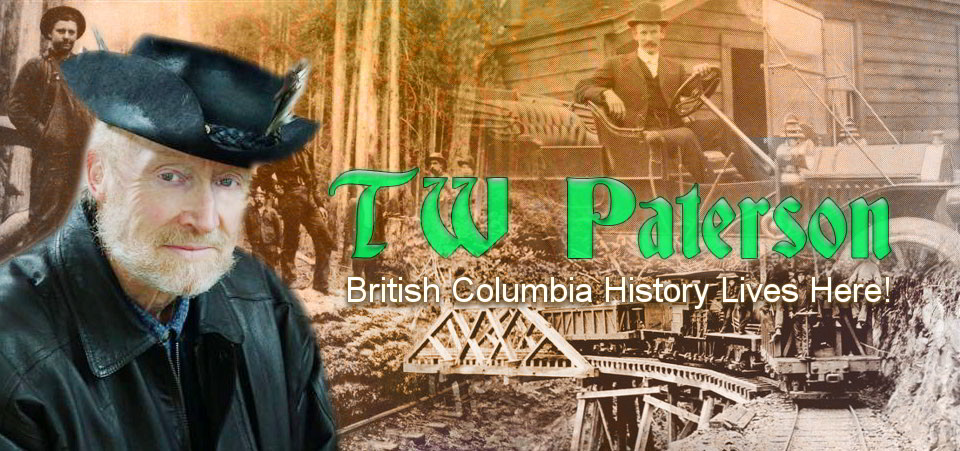Cowichan Poet Robert McLay Honoured No. 1 Mine Victims
BACKGROUND: When Cowichan settler Robert McLay took pen in hand to honour the lost miners of Nanaimo’s No. 1 Mine, he did so as not just as a poet but as a former coal miner himself. His firsthand knowledge of the dangers of working underground made his tribute from the heart even more meaningful…
As many Nanaimo residents prepared to sit down to dinner May 3, 1887, an explosion shook the workings of the Vancouver Coal Co.’s No. 1 Esplanade Mine. Then a second blast and the steady scream of the mine’s whistle confirmed yet another colliery disaster.
Although coal towns Nanaimo and neighbouring Wellington were no strangers to tragedy over the industry’s 30-odd years, this one was the worst of all,:150 men. It’s Canada’s second worst colliery disaster.
But the horrific story of the No. 1 Esplanade Mine will have to await another day. Instead, I want to tell you of a little known sidebar to this most significant event in B.C. history…
It’s one of those incongruities that grabs your attention simply by it’s being there. It’s something you’d never expect to read in a local history. But there, on page 194 of the classic work, Cowichan My Valley, four short paragraphs are so out of keeping with the text that they seem to jump the rails.
Nathan Dougan was writing of Robert McLay, patriarch of the Scottish pioneering family that settled at Koksilah, just south of Duncan, in 1874, even though from time to time Robert went off to follow his trade as a miner. This meant that wife Elizabeth was stuck with having to manage a homestead with five young children.
Not that it was the first time that Robert McLay had left his wife with sole family responsibility, she having had to run a small shop in Airdrie after he’d quit the mines to sail for new opportunities in America.
After two years in California Robert returned home to collect his family, only to have Elizabeth refuse to uproot her life and that of the children. So back to California went Bob. It was the accidental drowning of their young son Willie that prompted a grieving Elizabeth to agree to a fresh start halfway round the world and, in due course, by ship and by the Isthmus of Panama, she and the four surviving children joined husband and father in the Sacramento Valley.
For Elizabeth it was too arid–and too American. She wanted a damper environment, one under the Union Jack. So off went Bob once more, this time to Vancouver Island and the Cowichan Valley. At Koksilah, immediately north of the Koksilah River, it was damp all right–sometimes to the point of flooding–so much so that he named what was to be their farm Willow Brook.
The Robert McLay house, built of lumber rafted up from Sayward’s mill at Mill Bay, was one of the first in the area to be of frame construction rather than of logs.
With hard work, time and the help of the growing children–the girls sharing the gruelling toil of clearing the land with their older brother–Willow Brook Farm steadily beat back the forest. But Bob again became restless, to the point that he and Elizabeth ultimately separated, he establishing anew at Glenora.
There, the seemingly frustrated homesteader was able to indulge in reading and writing poetry. And it was there, in his cabin beside Beaver Creek, in the spring of 1887, that Robert McLay, likely recalling his own experiences as a young miner in the Scottish collieries and California gold mines, was moved by tragedy to set pen to paper.
This is where the incongruity of his text comes in as Nathan Dougan suddenly mentions a “lovely May morning” when the children of Cowichan Station area were in class in the South Cowichan Bench School. They and their teacher were suddenly interrupted by George Fielding, who’d come to inform them that “a terrific explosion” in the No. 5 Mine at Wellington had claimed 190 lives.
As it happens, Dougan has the right time frame but the wrong mine.
May 3rd, 1887 marks the Island’s worst-ever coal mine disaster in the No. 1 Pit of the Esplanade Mine, Nanaimo. One hundred and 50 men dead was bad enough, never mind Dougan’s 190.
It’s not my intent here to quibble over dates and numbers with this great local historian of old but, as stated, to marvel at how momentous news, before the advent of radio and television, travelled in the olden days, and how such a momentous event would be felt in a community seemingly so far distant and isolated as was Cowichan Station in 1887.
How George Fielding heard of the disaster we don’t know. Nor do we know what possessed him to interrupt class to inform teacher and students of the Nanaimo catastrophe. Did he travel the neighbourhood, alerting all and sundry? We only know, thanks to Nathan Dougan (and son Bob who published his many newspaper articles in book form in the early 1970s), that he did so on that “lovely” morning in May. Did the teacher dismiss class? It’s not stated. Did any of the children have relatives at work in the Island collieries, perhaps in Nanaimo? Again, we aren’t told. We know only what Dougan has stated above.
And that the former coal miner and devoted fan of the great Robbie Burns, Robert McLay, living apart from his wife and children in a tiny cabin beside Beaver Creek in Glenora, was inspired to take up his pen in tribute to his peers.
We can only wonder at his thoughts as, alone in the soft glow of kerosene, this former miner who understood better than most the hardships and dangers of working underground, laboured with pen and ink to set down in words his thoughts on the horrors of a mine disaster.
Robert McLay’s earthly travels finally came to a close in 1915. After their lengthy separation he and Elizabeth are together again for eternity, side by side in Mountain View Cemetery. Only in recent years have the victims of May 3rd, 1887 been publicly remembered with a signboard listing their names (numbers in the case of the anonymous Chinese miners), just off the Island Highway at the intersection Haliburton and Milton as you enter Nanaimo from the south.
* * * * *
FOOTNOTE: I moved to Cobble Hill too late to know Nathan Dougan but son Bob was a neighbour and with our common interest in history, we became friends. He and his brother Fred, also a neighbour, were invaluable sources of local lore for a newcomer such as I.
My connection with the pioneering McLays is also serendipitous—I live in Elizabeth McLay’s final home, on the Koksilah Ridge a mile or so from Willow Brook Farm. It’s been built in three stages over the years, hers being the first. I’d never have known if the late Valley oracle Jack Fleetwood hadn’t told me.

